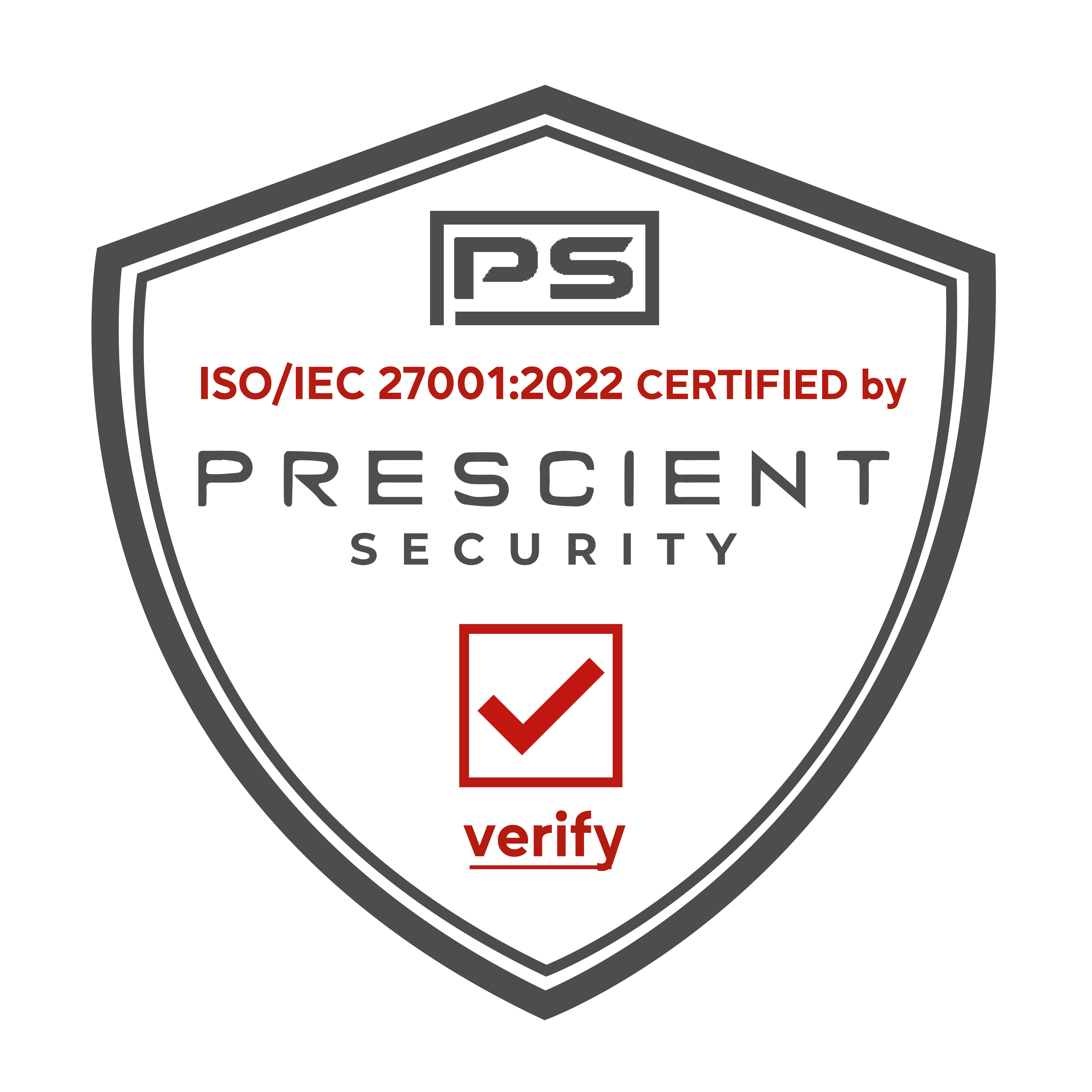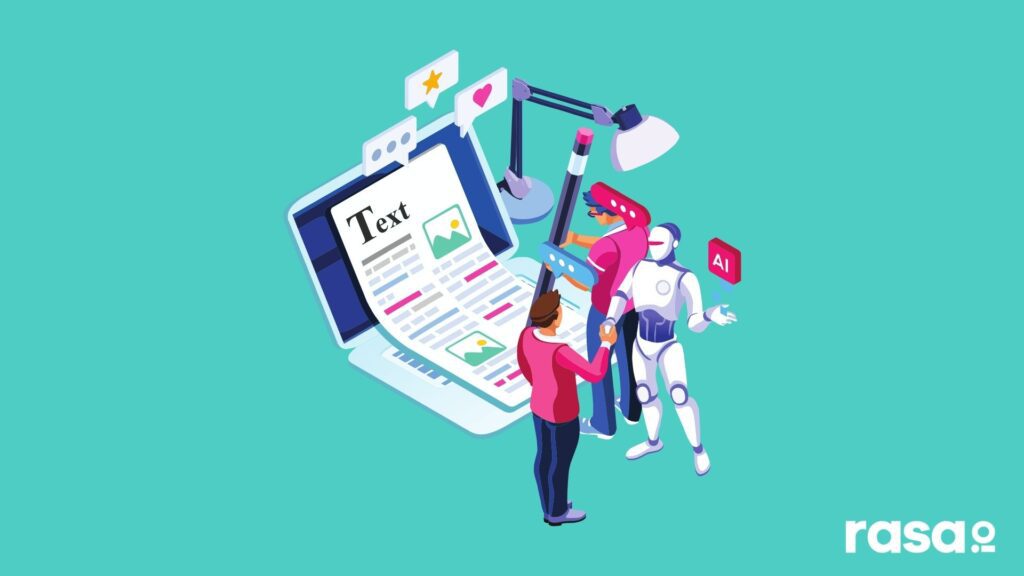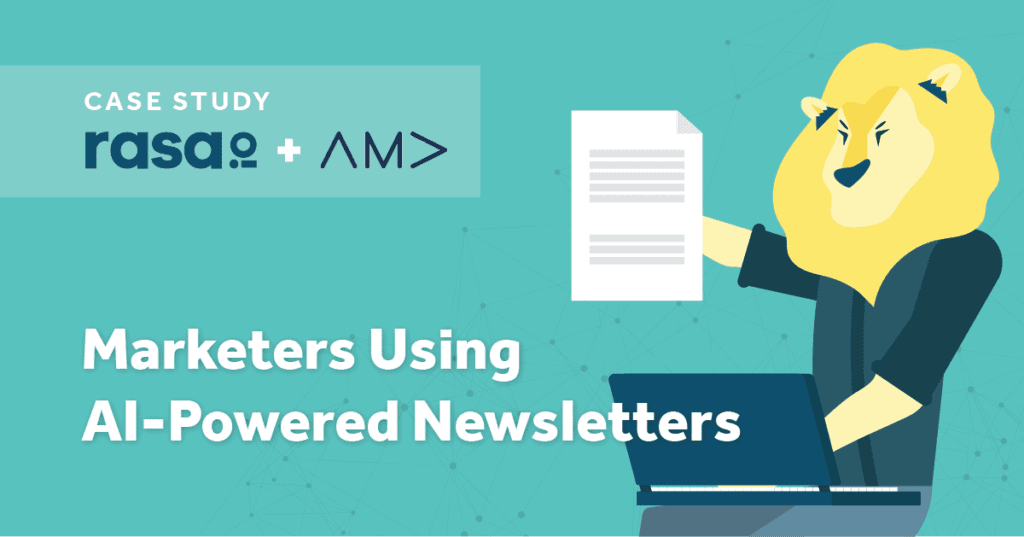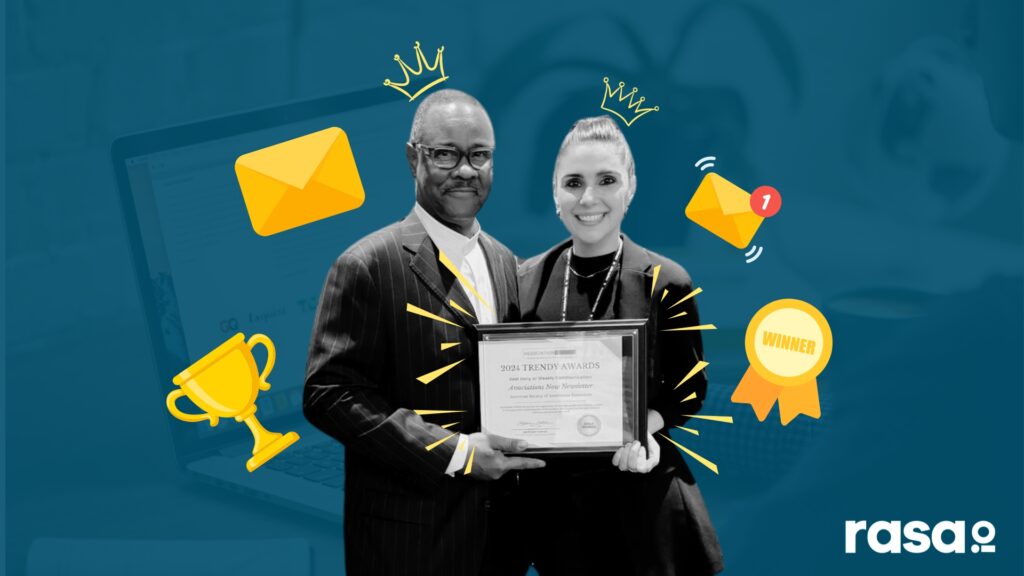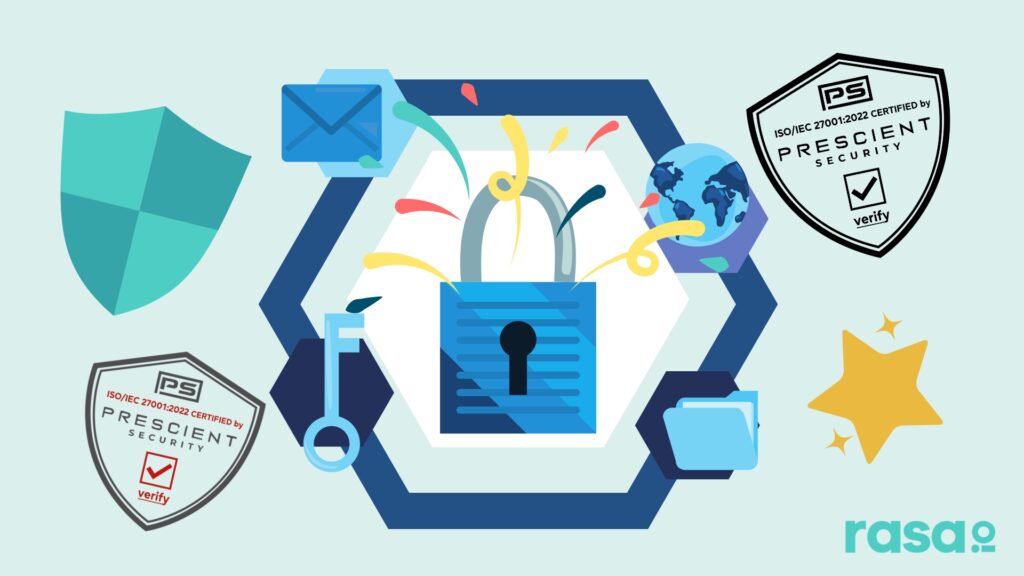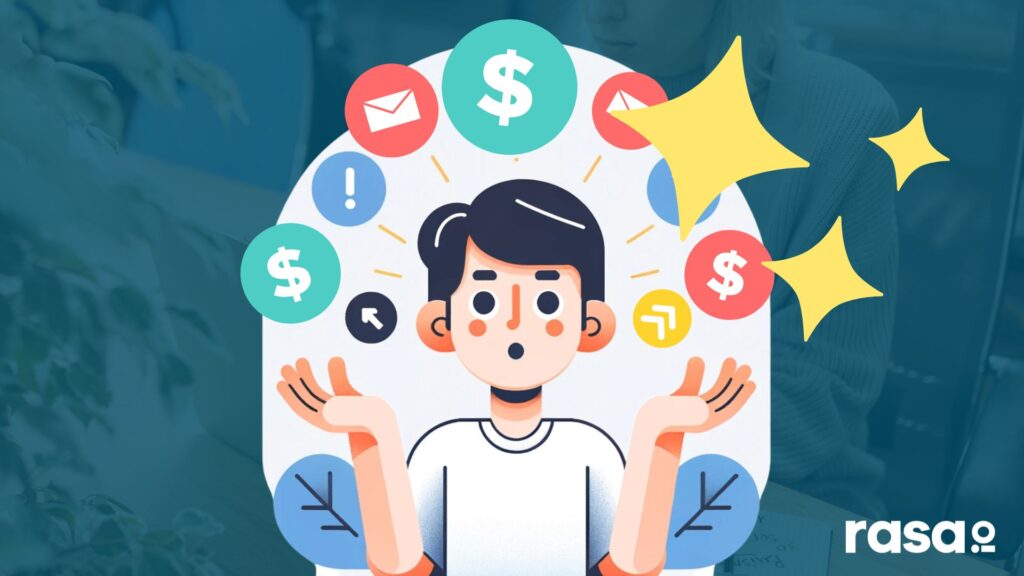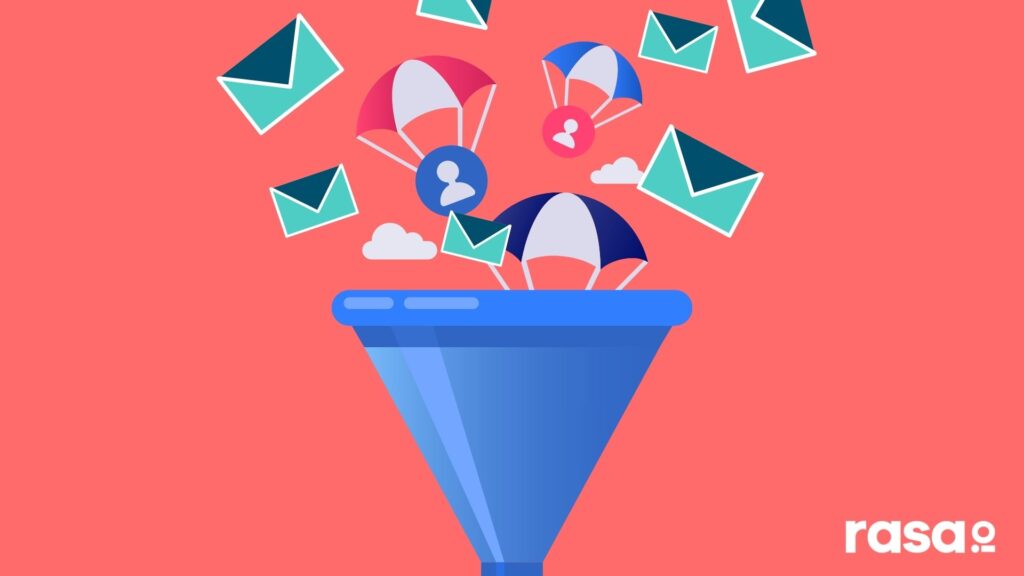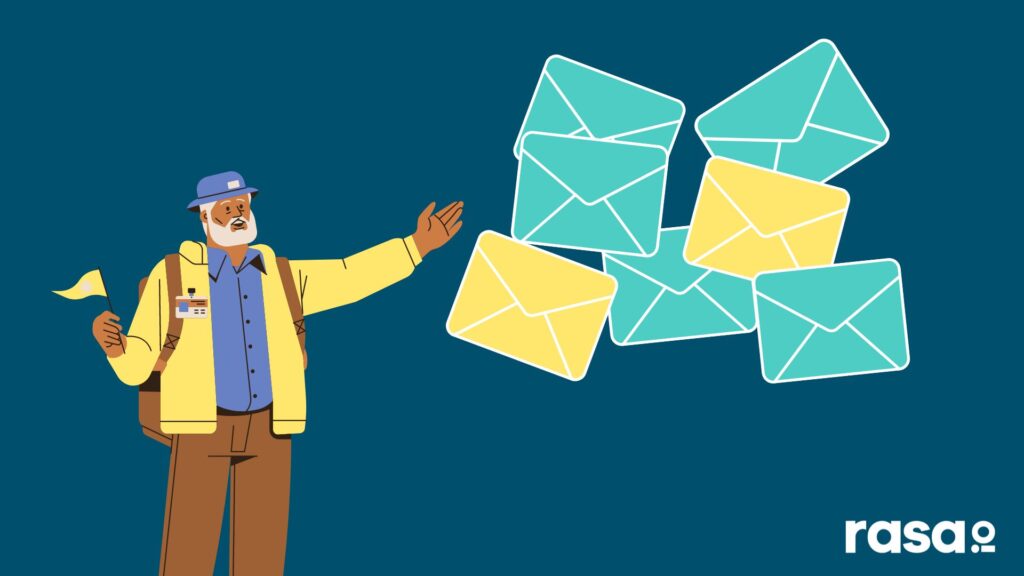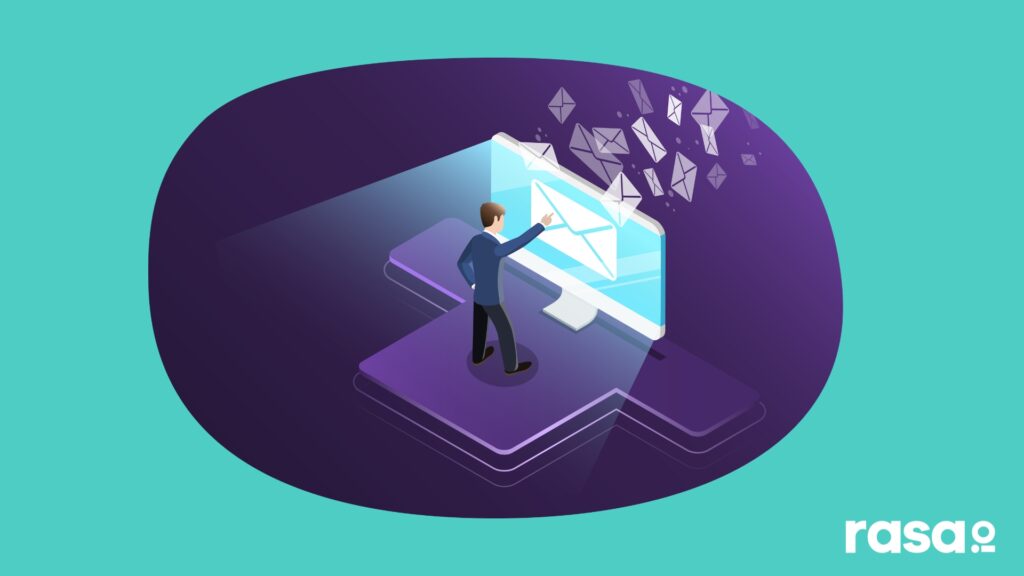Cody Sanchez
An investor and former journalist that publishes guides, playbooks, and who built multiple successful email newsletters reaching over 100,000 subscribers. This is Cody Sanchez’s story about Pushing Send.Key Points From This Episode:
- Avoid the middleman: You don’t want somebody else to be able to remove your ability to communicate directly with your user and control that relationship.
- If you’re going to be in someone’s inbox, be there for something great or be funny or be a real value-add – but don’t just to be there.
- There’s a huge difference between trying to be right and trying to make people think. If you can think critically, the world sort of opens to you like a blossom.
- It’s important that you charge something for some part of your newsletter.
- People don’t value things that are free as the same as they do things that they pay for.
- Media businesses are tough and you need to have multiple revenue streams off of them.
- Within a business, internal email can be the kiss of death – use Slack instead.
Tweetables:
“Why can’t I learn about that in a way that’s interesting? And that has a little bit of a story to it. And I try…giving it to you in a way where you’re kind of looking forward to just reading the verbiage of it and you learn through osmosis. I think that’s beautiful.”
– @Codie_Sanchez on Pushing Send the podcast by @rasa_io
“The great thing about emails, you can have a relationship with the user directly.”
– @Codie_Sanchez on Pushing Send the podcast by @rasa_io
“…I love writing. I think probably one of the most powerful things you can do is to learn how to communicate with the written word.”
– @Codie_Sanchez on Pushing Send the podcast by @rasa_io
“I don’t think you really have to know what you’re doing in the space. You’ve just got to get out there and create it and see what lands.”
– @Codie_Sanchez on Pushing Send the podcast by @rasa_io
“It’s much easier to get a group of a thousand people engaged than it is a hundred thousand people.”
– @Codie_Sanchez on Pushing Send the podcast by @rasa_io
“The lowest common denominator is humanity and humanity for the most part decreases or defaults to what they already know. So like…you don’t have to be at the top level to make things happen. You can start a newsletter, have it be profitable.”
– @Codie_Sanchez on Pushing Send the podcast by @rasa_io
Links Mentioned in Today’s Episode:
Episode Transcript
Cody:
The great thing about emails, you can have a relationship with the user directly. And I love writing. I think probably one of the most powerful things you can do is to learn how to communicate with the written word. And so from a writing perspective, it used to be that if you wanted to write and have people read, it, you’d have to get published. but I didn’t want to go that route. I didn’t want to publish a book at the time. I wanted to just communicate to various audiences. And so emails seemed really interesting to me, but actually have a conversation with somebody and you didn’t need anybody to give you permission, just went and wrote as you wanted to, that to me as the beauty of email, and maybe that’ll be supplanted by things like text message or video in the future, but in a way I hope it doesn’t because I love to read some of my favorite writers through actually their emails and newsletters.
Brian:
From rasa.io, the tool for sending smarter and better email newsletters. This is Pushing Send, a show featuring people who send emails, their subscribers actually want to read. I’m Brian Kelly and on today’s show the story of an investor and former journalist who built a successful email newsletter reaching over 100,000 subscribers. Here’s Cody Sanchez from contrarian thinking. So you’re involved in a number of business ventures as an investor, but why do you love email newsletters so much?
Cody:
Sure. I think threefold one is that I like to control my relationship to the consumer in any business that I have and not have a middleman and the middleman, meaning a platform like Substack or Instagram or Twitter or whatever the case may be. I don’t want somebody else to be able to remove my ability to communicate directly with my user and control that relationship and actually have their contact information. And I think that’s proven wise over time. And then two is that it’s so much more scalable. You were talking before this, about a company that I used to work for and they really were big on one-to-one communication. You’d go out with this army of salespeople and you go and sell these financial products and you sit down and buy people’s steak dinners and you take them out late at night, and that’s how you sell financial products. And I feel like that’s highly inefficient and I feel like that’s also sort of, you know, a way to do it in the nineties and won’t be the way going forward. And so to me, email fits both of those buckets. It’s efficient, like social media is, but it’s direct and that we can control the actual relationship with the consumer.
Brian:
Now you started your career in journalism and I’m curious how that impacts how you write the newsletter.
Cody:
Yes. I mean, I think some people just have that nudge inside of them to write and that’s always been me. I also, I get a little bit perturbed by bad writing. I get perturbed by, you know, emails in my inbox. Like if you’re going to be there to be great for something, be funny or be really value-add, but don’t just to be there. I think that’s probably part of the reason I started at when I first started contrarian thinking it was a pushback to this isolation we were having globally and I wanted people to think critically. It was all about, can you have pushback to ideas? I love this idea of a competition of ideas where we’re not emotional. If one athlete beats another athlete, we just, that athlete won, it was better prepared in that instance or was a better athlete. And I like this with ideas as well. So that’s, I push on that quite a bit in the newsletter. And I kind of tell people constantly that I’m not trying to be right and make trying to make people think. And there’s a huge difference between the two, as I mentioned the beginning, if you can think critically, I think the world sort of opens to you like a blossom and I find that intriguing. And I also think that it’s why do we have to consume content to learn that is so incredibly dry. You know, if I want to learn about crypto and Bitcoin, why can’t I learn about that in a way that’s interesting? And that has a little bit of a story to it. And I try to do that with things that cashflow with buying businesses, with financial freedom, giving it to you in a way where you’re kind of looking forward to just reading the verbiage of it and you learn through osmosis. I think that’s beautiful. And Jonah Goldberg does an amazing job at that at the dispatch. His is politically slanted, but every time I read it, there’s a sentence or a couple paragraphs where I’m like, oh, that’s such a beautiful turn of phrase. And I think there’s something to be said about that.
Brian:
Yeah. And that’s what I appreciate about with your newsletter is there’s always something interesting to read. So you’ve grown pretty fast in the past year, but it’s contrarian thinking your first newsletter or have you done this before in the past?
Cody:
I had Done two other newsletters much back in the day. I started one called selling self and that would have been in like 2007 or something. I hope none of those are circulating on the internet. I really like to ruminate and brainstorm by writing one of my partners. And one of my businesses on conventional acquisitions always wants to brainstorm verbally. I just don’t work like that. I need to sit in a room, nobody talked to me some music on at the time I ran a relatively large business in Latin America and I was selling south. We were selling financial products and, and building out an asset management firm in Latin America. And so that was the first foray. And then I shut that down. Basically for compliance reasons. We started getting so big that there are a lot of these financial regulations where you can’t go out and write and say things publicly. And so they asked that I please cease and desist. And then I wrote another one called the struggle isn’t real. And that one was sort of short little snippets, like my top five things I find interesting in this week, sort of an amalgamation of things accumulated in my life. And that was fun to write as well, but it wasn’t long form. This is the first one I’ve written that is sort of a story in each piece. And then it comes with a component that’s really fun. I think now, which was called contrary and cashflow. And that is a playbook. So that one, we have the free newsletter that is stories from Cody tactics way to cashflow and get financial freedom and think unconventionally, we talk about civilizing, the mind compound in the bank account and making Savage the body. And then we add this countrian cashflow, which is literally a guide. So we’ll take one of our ideas each month on cashflow and we will execute on it ourselves. So we’ll buy land, put campers on it, we’ll invest in a mobile home complex, we’ll do the thing. And then we’ll get everybody, all the resources, templates, and tools we use to execute on it with an expert in the space. We have 12 ideas a year we’ll end up more like 20 because we get a little ahead of ourselves and each one will teach you exactly how we executed on that idea. So that maybe a few people will too. And now we’ve had 30 or 40 people email and tell us, you know, Hey, you know, I got the extra $10,000 in passive income and that just kind of makes it all worthwhile.
Brian:
Can I get that as part of the free newsletter or I have to be subscribed as a paid subscriber to access that type of really awesome, actionable content?
Cody:
That is the one that you pay for. So it comes with a Facebook community. So it’s a Facebook group where we share all the ideas and then a monthly AMA or live Q and a, where we walk through them with the expert and then the playbook. I mean, we could sell it lots of different ways. Lots of publishers sell these as actual guides. That probably be the more profitable way to do it. So we could sell these for like 199 bucks, 200 bucks or whatever for you to learn how to buy real estate at auction or how to set up your own tiny house and cashflow it on Airbnb. But I like people to get the full 12 or 20 months of these so they can pick which one actually fits best for them and their life, as opposed to, you know, spending money on one and realizing you don’t want to actually do that thing.
Brian:
Well, it’s interesting to hear that you had some other experiments and contrarian thinking, isn’t your first newsletter. So I’m assuming you’ve been able to use those learning experiences.
Cody:
Yeah, I think that’s definitely true that said, like, I don’t think you really have to know what you’re doing in the space. You’ve just got to get out there and create it and see what lands and we’re messing with the business model all the time. We’ll probably increase the price to it. I really think it’s important that you charge something for some part of your newsletter because people don’t value things that are free as the same as they do things that they pay for. So those are a couple of lessons learned the hard way.
Brian:
When we come back, Cody shares some new lessons she’s learned. Plus she describes a unique email newsletter experiment. She ran with a couple of collaborators. I’m Brian Kelly, and you’re listening to pushing send from rasa.io.
rasa.io:
You deserve to get more from your email list, more sales, more leads, and more engagement, but publishing a consistent newsletter that you more…. It’s time-consuming. so at rasa.io, we’ve simplified the process. We’ll automatically personalize emails for each of your subscribers based on their interests. And when your subscribers get more of what they want, you get more of what you want. Everybody’s happy. You want to see how it works. Visit www.rasa.io and click how it works.
Brian:
Welcome back to pushing send. I’m Brian Kelly. Cody Sanchez has built a loyal following through her contrarian thinking newsletter. And one of the ways is by applying what she’s learned over the years about email. Here’s Cody explaining this further, have there been any hurdles or new lessons learned as you’ve set out to grow contrarian thinking?
Cody:
I think substack is okay to test on. The second that, you know, you realize that there is something there I would build your own website. One, the conversion is about 10 X on our landing page versus sub stacks landing page two. It’s never really great when your product looks almost exactly like all the other products out there that slight differentiation is important. So I would have probably done that sooner. You know, three, I think media businesses are a little hard and that you need to have multiple revenue streams off of them to really think about what does that flywheel you have? We have our contrarian thinking newsletter and the premium version. That’s where we make money on this, but we also have a mastermind. We also have a course. We sell, we also have an events business. And then where I make most of my money is not a newsletter at all. It’s the companies that we own and the investments that we make. And so, you know, I think that part’s important too, to make sure that your content never gets compromised. I don’t ever write something for a sponsor because I don’t have sponsors and I don’t have ads. And I don’t want to taint the newsletter at all with people trying to tell me, what are I, what I cannot speak on. And I don’t want to have to gear the content towards some advertiser. And so the way that I ensure that is by having other revenue streams, that can then manage it on top, but we’re still perfecting it. I mean, and then, you know, I guess the last, the third point would be, you’ve got to figure out what you want to be. You know, you can play the low vol or the high volume, low dollar game of charging somebody $4 or $8 a month or something like that. But then you have to have a ton of people buy your newsletter for it to be valuable enough for you to keep running it, or you can go higher end. And I think geared towards the higher end, it’s much easier to get a group of a thousand people engaged than it is a hundred thousand people. And then just over-serve the out of those thousand people and make sure that what you’re charging is just a fraction.
Brian:
Now I’d love to gauge how much of an impact email has had on your business or maybe even ultimately a personal life?
Cody:
I mean, I think it’s a two-sided coin, right? When it comes to the size of my email inbox and how much I have to respond to stuff in it, I’m sure there are days where I’m like, that’d be great. Let’s do it. But the, for my businesses, it’s actually so crucial. I mean, I think if we weren’t able to acquire customers with email and if we weren’t able to send out newsletters and create content that way, we’d be able to figure it out. And I think within a business, internal email is the kiss of death. I try to get everybody on to slack and all my businesses, but an external email to send out to clients and to receive content is actually hugely valuable. I would say it would very severely impact their businesses. And I think it would be for the negative.
Brian:
Yeah, Well, I can see that. So one of your projects I’ve followed over the past several months is something called grow getters, the email newsletter. What was that experience like for you?
Cody:
Yeah, so we, we started grow getters basically as an experiment that we covered in contrarian thinking, and on, we told people, I told people you could grow to your first 10,000 subscribers within 30 days. And that’s what I did with contrarian thinking, and then I said with grow getters, could we do that same thing again, but could two people who aren’t me do the same, uh, deal. And I think we got up to like eight or 9,000 subscribers within 30 days, maybe a little bit more than that. And so I thought that was a fun experiment. We could try. We committed to, I believe 30 or 60 days to do this grow getters experiment. There was an excuse to do it with two friends of mine. And then in Alona it was really fun. And then we wanted to figure out, could we sell the newsletter? That’s another thing I was talking about. And we were able to sell it and list it on Do’s a friend of ours platform. You know, sometimes I think people see M and a, or they see these businesses that I’ve built or sold and they think, well, you know, you can do it because you’ve done it all these other times and you can do it because maybe you have money or all of these other unfair advantages. And it’s like, actually the lowest common denominator is humanity and humanity for the most part decreases or defaults to what they already know. So like, you don’t have to be, I don’t even know if you want to be at that quote unquote my level or what that means, but you don’t have to be at the top level to make things happen. You can start a newsletter, have it be profitable, like grow getters was for us and sell the newsletter for thousands of dollars within a 30 or 60 day period. And you don’t have to be me to do it. I purposefully I wrote some of them. So there is talent there too, but I didn’t do the distribution. I had nothing to do with the sales process, Allman handled the whole thing. And all we did is listed on another, another site. So I think those are just fun, micro experiments to make sure that you never get too precious about, you know, I’m only going to do a deal if it’s millions of dollars and that you, uh, keep remembering what it’s like to start from the beginning and you don’t get out of touch or lose context. And so I try to do that frequently, despite maybe what people say on Twitter that, you know, that any of us that are investors are [inaudible] or out of touch or some of the crazy stuff that I write on there, we try to start from zero often so that we don’t forget what it’s like.
Brian:
Yeah. That’s so important. I’m glad to see that you’re doing that. So let’s talk about the workflow for contrarian thinking. What does that look like? You know, what’s the process, the order or sequence of things?
Cody:
So we kind of know what our content calendar is going to be for the coming weeks. We send a newsletter every Thursday, I try to have each newsletter have a rant. So like something to make you think, and then a segment that’s tactical, something that you can act upon ideas to implement, sort of that’s the twofold structure of contrarian thinking. We also have a structure that’s we don’t tell people about theories or ideas. As much as we tell about humans who have executed on something. So say like one of our last one, which was about, you know, he turned a vending machine business into $15,000 a month, monthly income. And then, you know how we turned our 10 hour, a week newsletter into a seven figure business. We have one coming up, that’s two working moms who hit a hundred K with mobile wine. So we try to share these real life stories of humans that have done the thing so that people know they can do the thing. And then we intersperse that with philosophy. So like, you know, the lessons I’ve learned on leadership from my husband, who’s a Navy seal or, you know, the 10 financial paradoxes that I wish I was taught in college. And I think, you know, if you can do those things together, that really helps that schedule the notion and then we’re getting a better oiled machine. It used to be me. I did this by myself with no support for a year. I wrote everything. I grew the newsletter. I was on all the social media channels. And then we added one person to help you with Twitter. Twitter is a great growth strategy. We use that a lot. We added a person to do Instagram’s really upping in our game on Instagram and trying to add a ton of content and value there. And we have somebody who edits and helps me input and finalize the newsletters, those go into WordPress and they have a little bit of a process they follow. So they look similar each time. And then we have somebody who sort of helps with admin and operations overall.
Brian:
That’s the end of our episode with Cody Sanchez, from contrarian thinking. And if you’d like to learn more about her newsletter, you can visit contrarianthinking.co. Now if you’re listening to pushing send for the first time, be sure to subscribe at apple podcasts or wherever you’re listening. So you don’t miss an episode. Lastly, if you’ve enjoyed what you’ve heard, I’d encourage you to check out a few episodes while you’re here. I’m Brian Kelly, and you’ve been listening to pushing, send from rasa.io.







